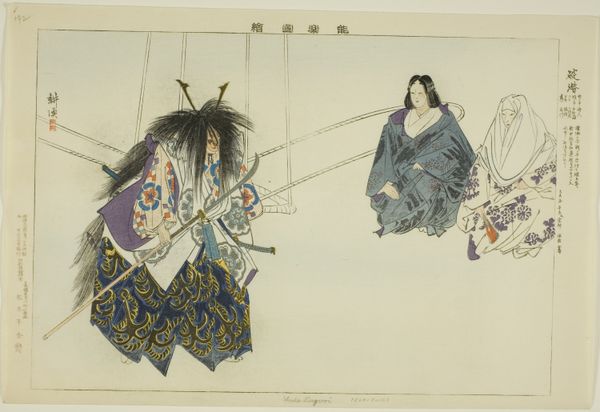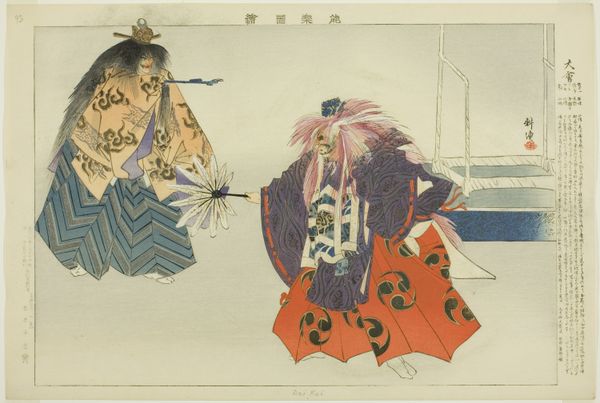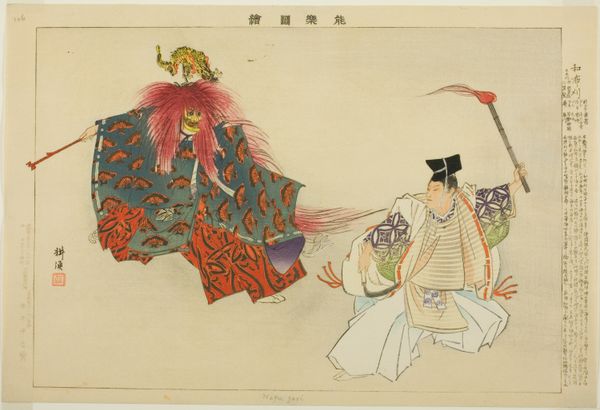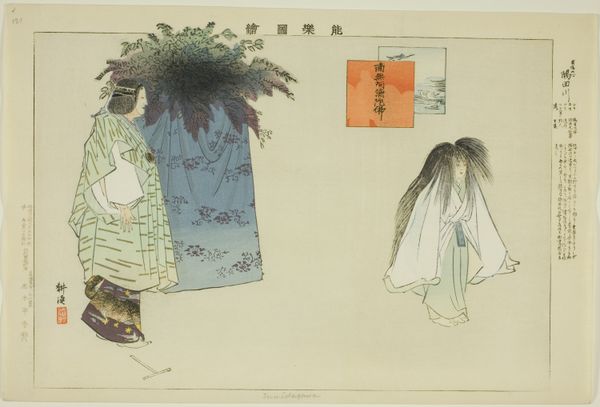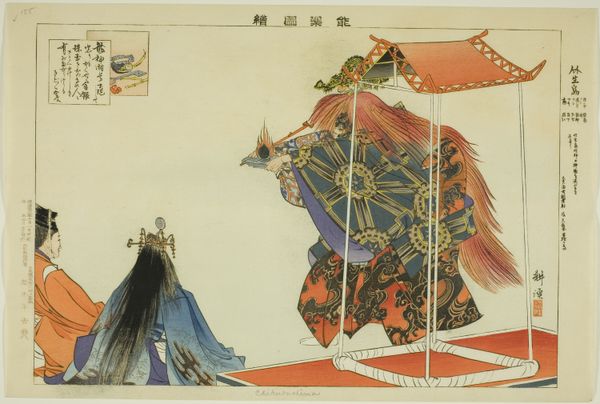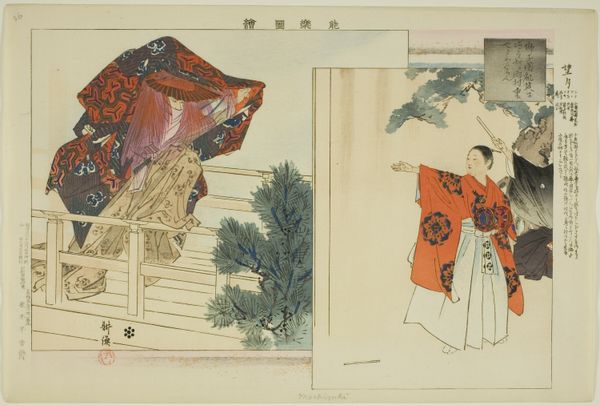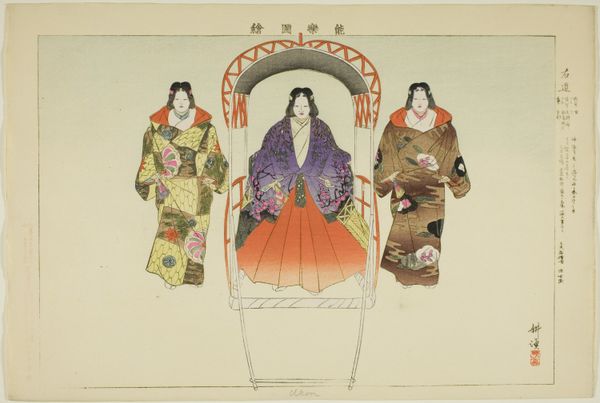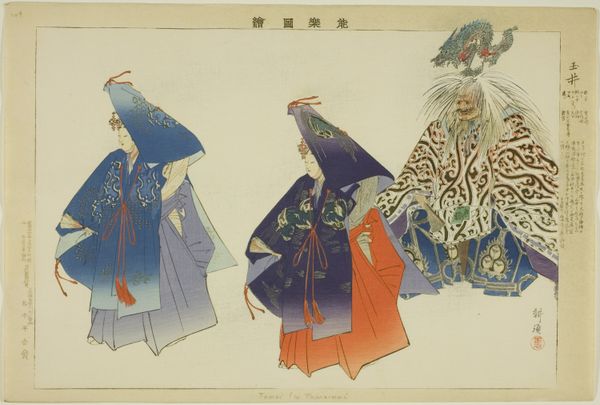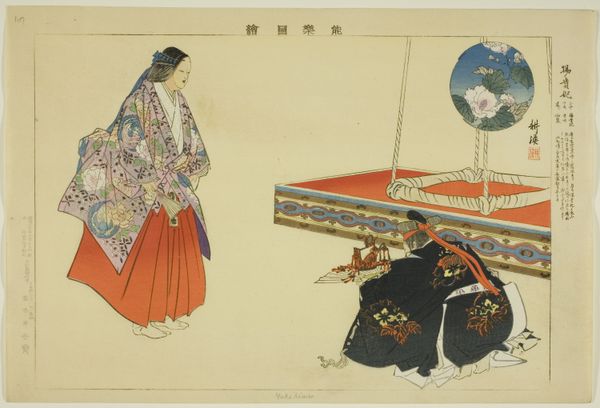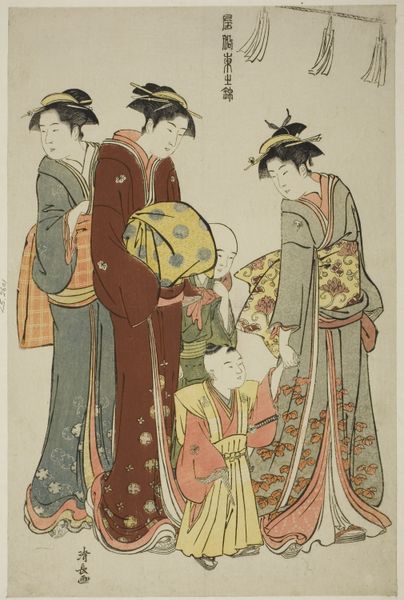
Ema, from the series "Pictures of No Performances (Nogaku Zue)" 1898
0:00
0:00
Dimensions: Approx. 25.2 × 37.4 cm (10 × 14 4/3 in.)
Copyright: Public Domain
Editor: This woodblock print, "Ema, from the series 'Pictures of No Performances (Nogaku Zue)'" created in 1898 by Tsukioka Kōgyo, strikes me as both ceremonial and somewhat theatrical. What stands out to you as you look at this work? Curator: I’m immediately drawn to the layering of performance and representation here. The 'No' theatre itself, with its stylized movements and masked figures, acts as a lens through which societal roles and historical narratives are examined. Consider the social context: the Meiji era saw Japan rapidly modernizing, often grappling with preserving tradition amidst Western influence. Do you think this print reflects that tension? Editor: I can see that, especially in the detail of the central figure's costume. It feels both traditional and intentionally staged. Are there specific aspects that emphasize the performance of gender or identity, perhaps? Curator: Precisely. The masked figure could be interpreted through a feminist lens, perhaps challenging or subverting conventional representations of women in Japanese society. Consider the role of masks in concealing and revealing. Are these figures empowered or constrained by the performative aspects of No? Editor: That's fascinating! I hadn't considered the masks in that light before, thinking of them only as part of a tradition rather than a comment on social norms. Curator: Indeed. And note the subtle use of colour and line, drawing on the conventions of Ukiyo-e while depicting this refined theatre form. It prompts questions about audience and access. Who was this image created for, and what cultural capital did it convey? Editor: I appreciate that perspective. Looking at the print through the lens of social and political performance really deepens its significance for me. Curator: And for me, considering your engagement allows new nuances to appear. The power of collaborative inquiry enriches the discourse around this print and activates its potent intersectional narratives.
Comments
No comments
Be the first to comment and join the conversation on the ultimate creative platform.
